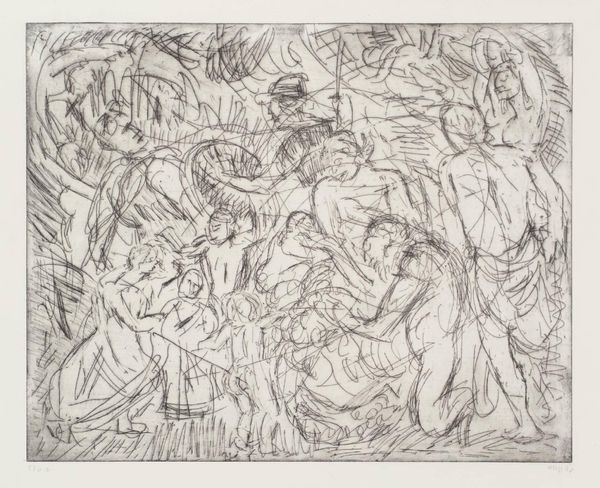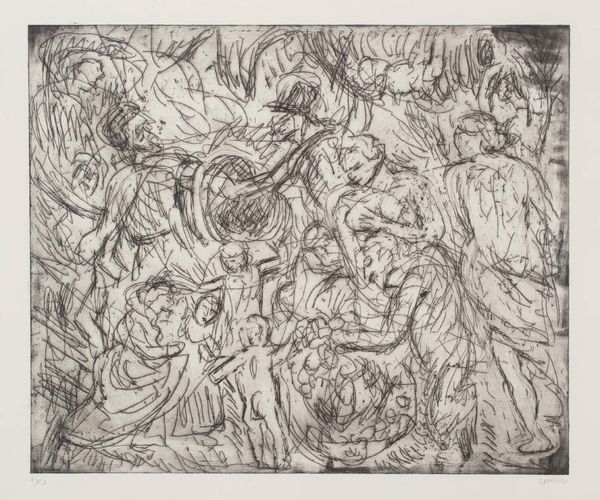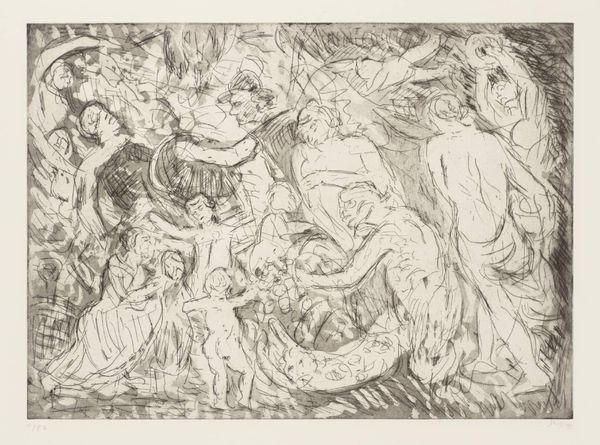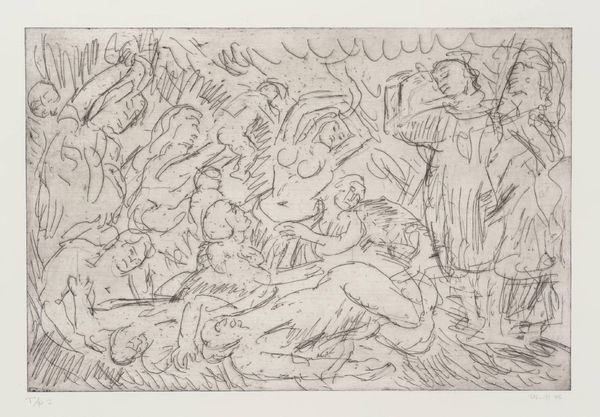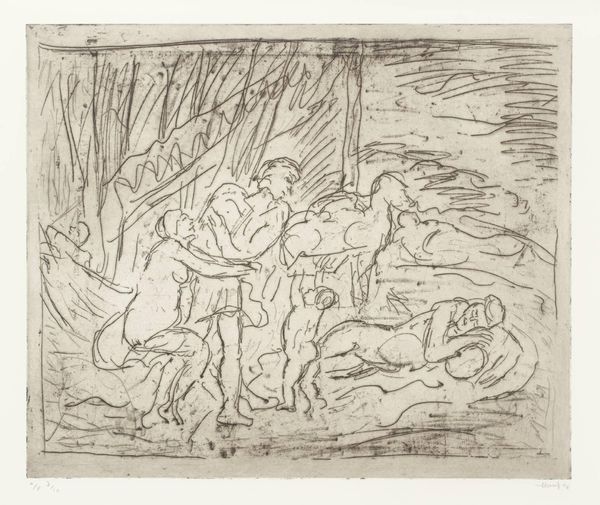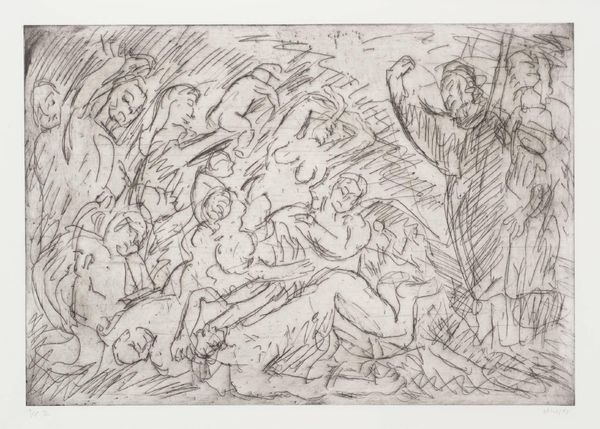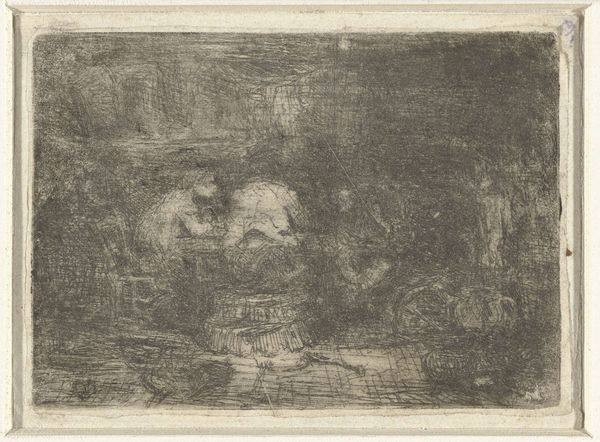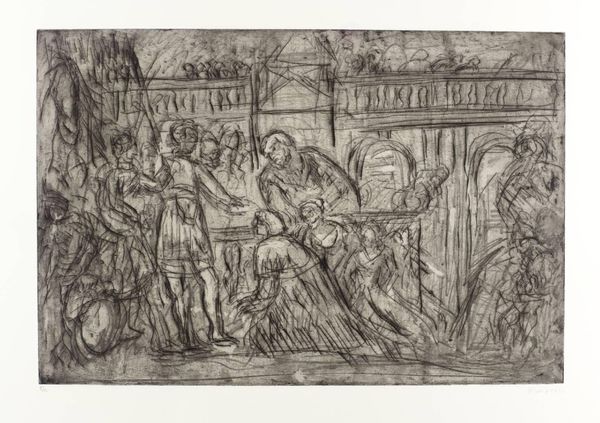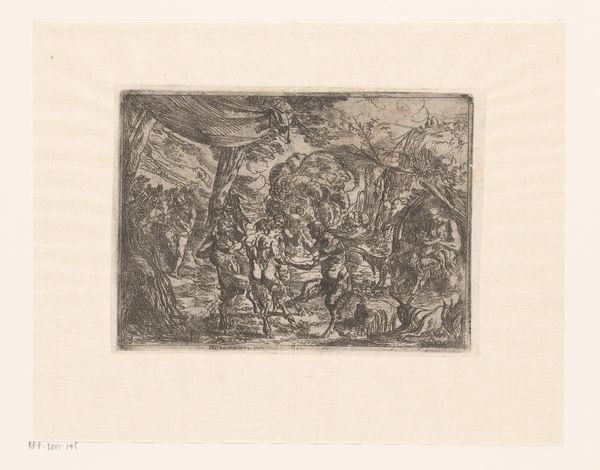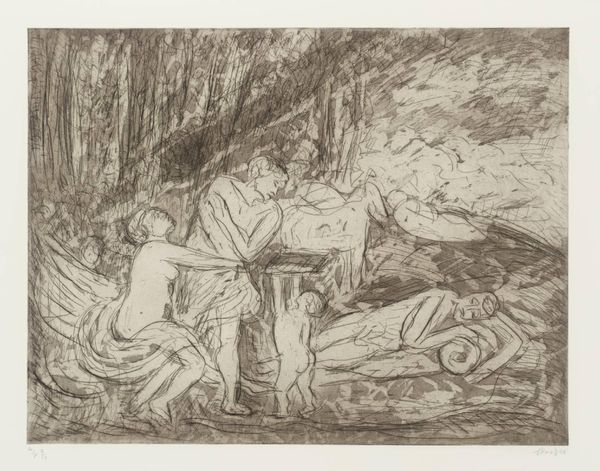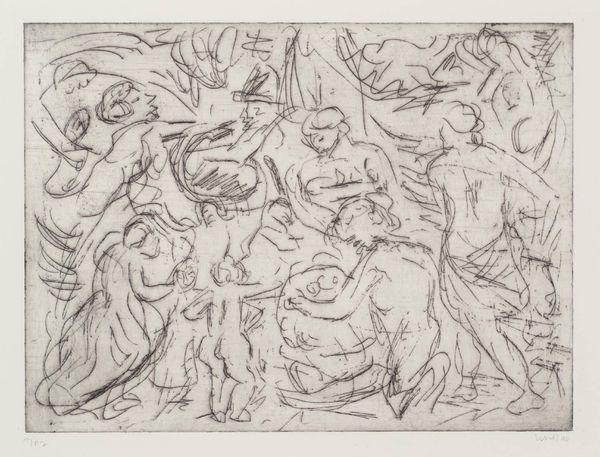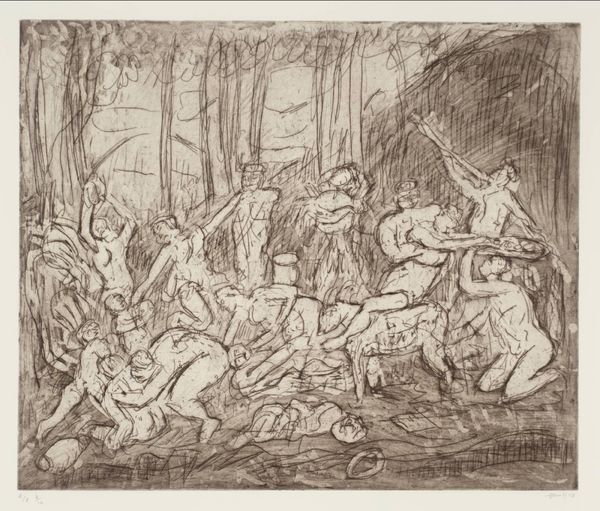
Dimensions: image: 450 x 607 mm
Copyright: © Leon Kossoff | CC-BY-NC-ND 4.0 DEED, Photo: Tate
Curator: Leon Kossoff, born in 1926, created this print titled 'Minerva Protects Pax from Mars’, also known as ‘Peace and War.’ It is currently held in the Tate Collections. Editor: It feels incredibly turbulent, the frenetic linework almost vibrating with conflict. The composition is so densely packed it’s hard to make out individual forms at first glance. Curator: Indeed. Kossoff’s distinctive impasto technique, typically seen in his paintings, is here translated into the etched line. Consider how the density of the hatching builds tonal depth and form. Editor: Absolutely. The subject matter – the contrast between peace and war – clearly speaks to post-war anxieties and the ever-present threat of conflict in the 20th century, reflecting a yearning for stability. Curator: Yes, the linear dynamism evokes an undercurrent of instability—a formal embodiment of the thematic tensions. Editor: A compelling tension between surface chaos and underlying classical ideals. Curator: I agree—a successful mirroring of theme through form, wouldn't you say? Editor: Precisely. It offers a visceral, rather than purely intellectual, engagement with historical trauma.
Comments
tate 6 months ago
⋮
http://www.tate.org.uk/art/artworks/kossoff-minerva-protects-pax-from-mars-peace-and-war-3-p11702
Join the conversation
Join millions of artists and users on Artera today and experience the ultimate creative platform.
tate 6 months ago
⋮
This print is one of many etchings executed by Leon Kossoff in response to, and literally in the presence of, oil paintings by old masters; in this case Minerva Protects Pax from Mars (‘Peace and War’), 1629-30, by Peter Rubens (1577-1640), owned by the National Gallery, London. Tate owns five prints by Kossoff after this Rubens painting (Tate P11700-4). The artist’s ability to explore a number of separate responses while making drawings and prints from a single subject is illustrated in these etchings. This print was never published as an edition; Tate owns the second trial proof.
